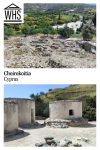Choirokoitia
By Ioana
What is Choirokoitia?
Choirokoitia is a Neolithic settlement located in Larnaca district, Cyprus, on the slopes of a hill by the Maroni River. The settlement was occupied from the 7th to the 4th millennium BC and it is an important prehistoric site.
In the beginning of the 9th millennium BC, a continental population arrived on the island. They developed into a unique civilization, known as “Cypriot Recent Aceramic Neolithic.” The site of Choirokoitia is a fine example of this cultural phase at its height in the second half of the 7th millennium B.C.
Disclosure: This article contains affiliate links. Making a purchase through an affiliate link will mean a small commission for this website. This will not affect your price. Privacy policy.
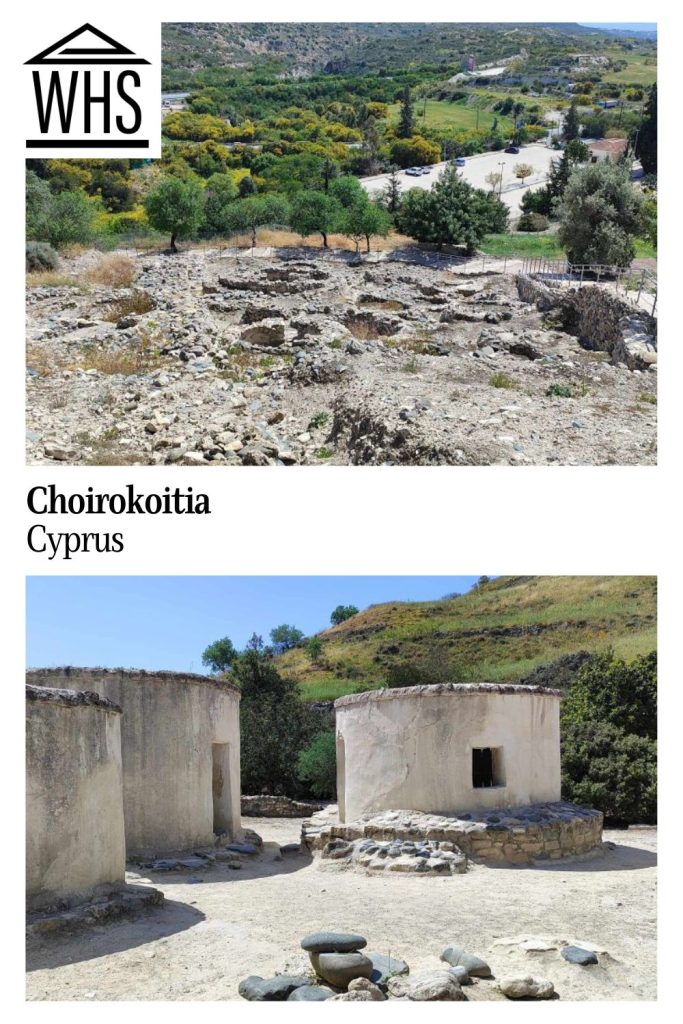
The site was discovered in 1934 by Porfyrios Dikaios, who worked for the Department of Antiquities.
Excavations have uncovered evidence of complex social structures, including communal activities like food storage and preparation and collective construction work, as well as evidence of trade networks. The main site consists of some well-preserved circular dwellings built with mudbrick and stone walls and flat roofs. These ancient dwellings revealed information about how people lived in the Neolithic period, including their house structures, daily activities and social organization. The settlement also provides evidence for understanding how the society transitioned from hunter-gatherer to agricultural communities.
Why is Choirokoitia a UNESCO World Heritage site?
According to UNESCO, Choirokoitia is a UNESCO World Heritage site primarily because of its exceptionally well-preserved prehistoric settlement, making it one of the most important Neolithic sites in the Eastern Mediterranean. It hasn’t been fully excavated yet, leaving “an exceptional archaeological reserve for future study.” UNESCO’s website states that “Both the excavated remains and the untouched part of Choirokoitia demonstrate clearly the origins of proto-urban settlement in the Mediterranean region and beyond.”
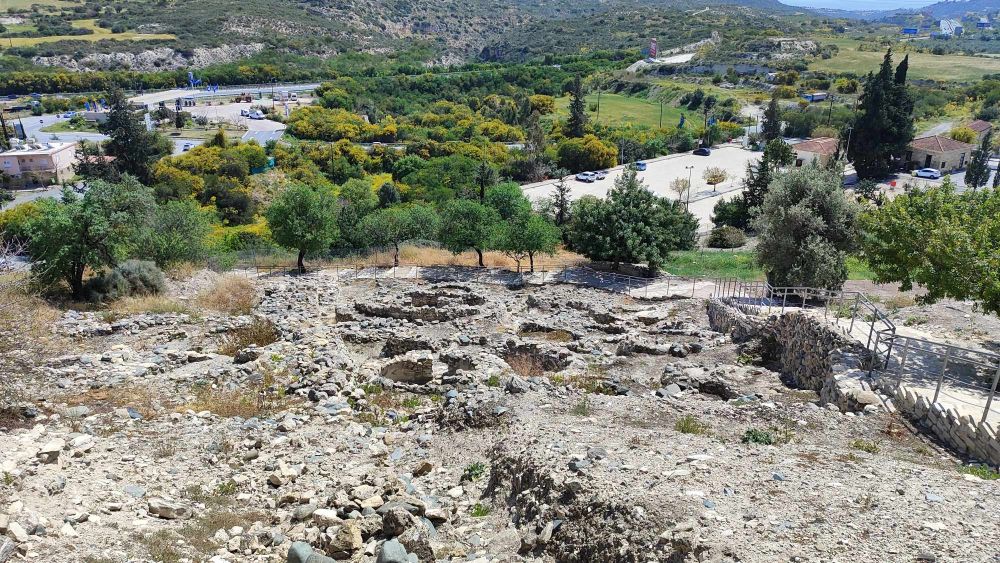
What can you expect on a visit to Choirokoitia?
Through my visit to Choirokoitia, I discovered an amazing settlement, which is one of the earliest known permanent human settlements in the Mediterranean region.
Five of the prehistoric round houses with flat roofs have been reconstructed using authentic materials to illustrate what life here was like in the Neolithic period.
Choirokoitia gave me the option to have a guided tour. In the visitor center, I learned about the site’s history and excavation process through exhibits, informative displays and multimedia presentations.
I also found a picturesque landscape, with views towards the villages located nearby.
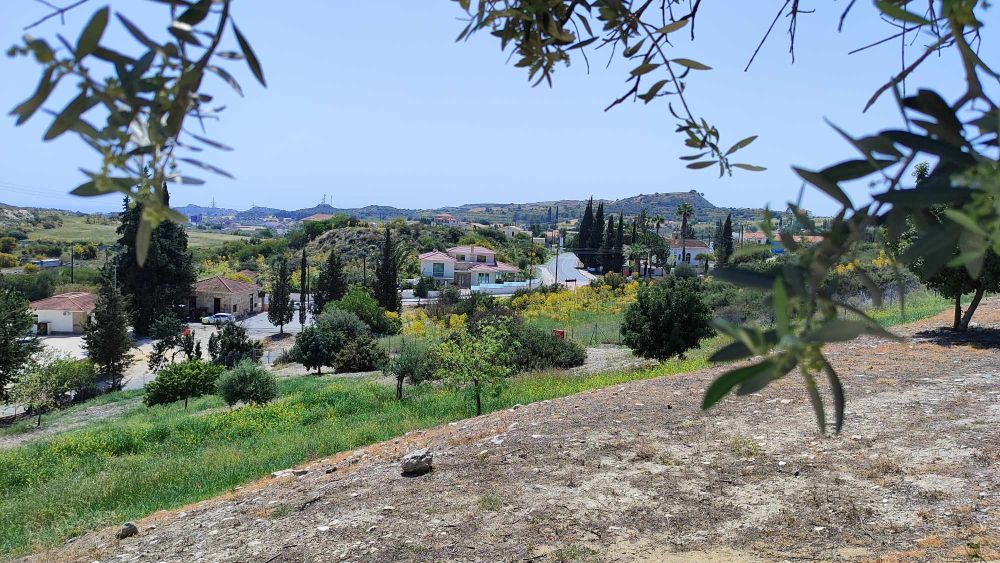
Is Choirokoitia worth visiting?
Choirokoitia is absolutely worth visiting, especially if you are interested in archeology, ancient history and cultural heritage. You will find here a unique place where you can explore the remains of a well-preserved Neolithic settlement, but you can also enjoy a scenic natural landscape with beautiful views.
I spent around 1.5 hours at this archeological site. I must say that it was a positive experience as I could delve into the ancient past and could explore the roots of human civilization.
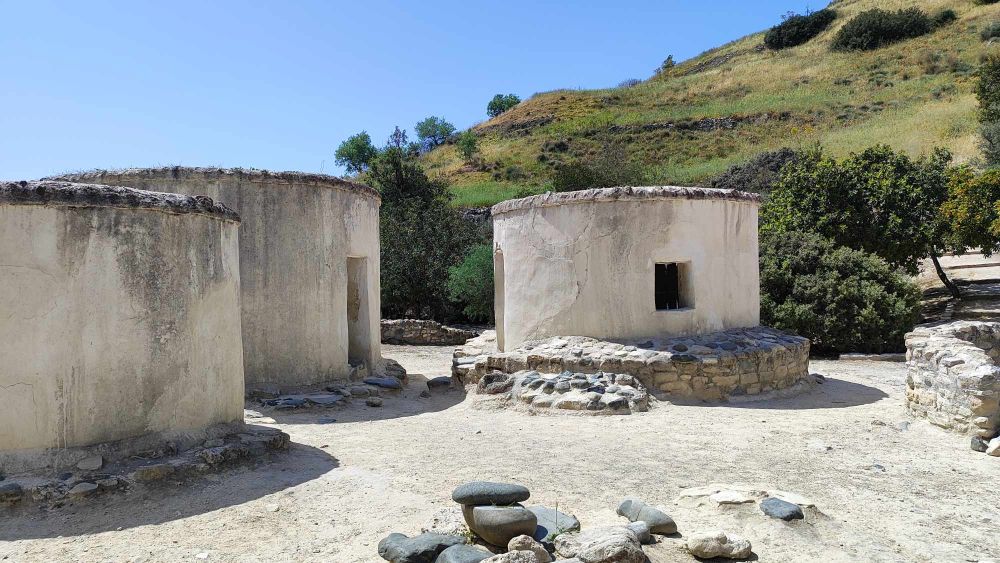
What sorts of travelers would like Choirokoitia?
Whether you love history, or you are an archeology enthusiast, cultural explorer, nature lover or photography enthusiast, this unique place in Cyprus has something to offer you, with a unique blend of history, archeology, culture and natural beauty. So if you are interested in delving into the past, or connecting with nature, or you just seek a new experience, Choirokoitia is a good choice for a stop in Larnaca district.
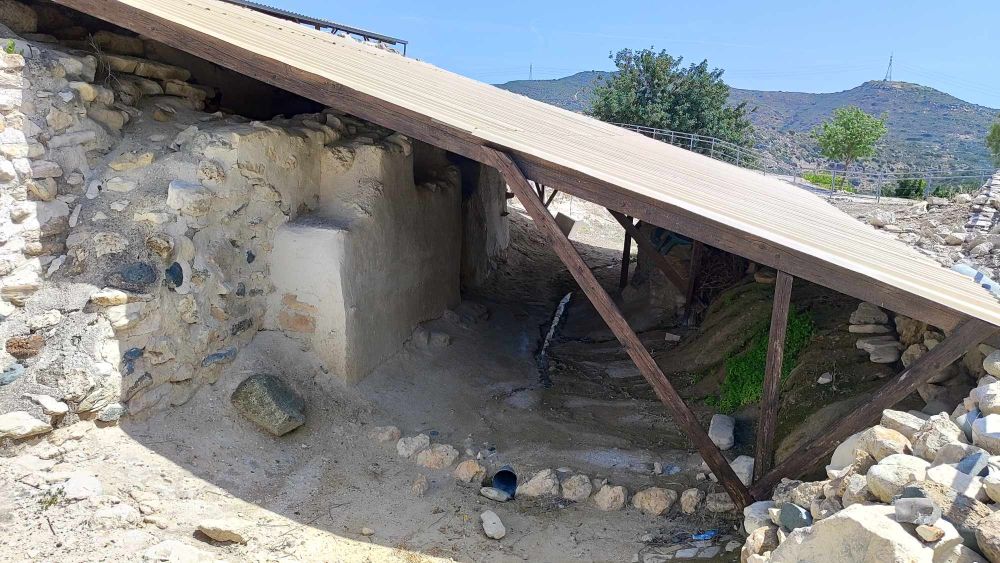
Tips for visiting Choirokoitia
As Choirokoitia is located in Cyprus, which has a very warm climate, it is advisable to visit the site during spring, autumn or winter months, when the weather is pleasant enough for outdoor activities.
I visited the site on the 1st of April, and I must say it was the perfect time. Everything around was lush green and I could also smell the flowers and trees from the nearby fields.
As I had to climb some stairs and pass through many rocky areas, I wore proper shoes. Also, I carried with me a bottle of water, sunscreen, sunglasses and a hat.
I took advantage of the fact that Choirokoitia is not far from Agios Minas Monastery, so I stopped for another hour at the monastery. There, I could enjoy the tranquility of the area and I could admire the variety of flowers planted by the nuns.
Only the reconstructed dwellings are wheelchair accessible.
Consider visiting the other UNESCO sites in Cyprus too.
Use the map below to find accommodations in Larnaca. Or zoom out to look along the coast closer to Choirokoitia (which is also marked on the map).
Where is Choirokoitia?
Choirokoitia is located in Choirokoitia village, Larnaca district, Cyprus, about halfway between the cities of Limasol and Larnaca. It is 35km (22mi) from Larnaca and 48km (30mi) south of Lefkosia (Nicosia). There are two ways to get to the Choirokoitia site:
- By car from Larnaca (nearest major city): The distance is approximately 35km (22mi). You’ll need 30 minutes by car, depending on traffic conditions. There is a big parking lot available near the archeological site, which is free of charge. Compare rental car prices.
- By public transportation from Larnaca: You can take bus 45 from Larnaca city to Choirokoitia village. From Choirokoitia village, you can walk or take a taxi to the archeological site. The distance between the village and the site is approximately 1-2km walk (.5-1mi). The total travel time by public transport may take around 1-1.5 hours.
For more information about Choirokoitia, its opening hours and admission fees, see its official website.
Have you been to Choirokoitia? If so, do you have any additional information or advice about this UNESCO World Heritage site? Please add your comments below!

